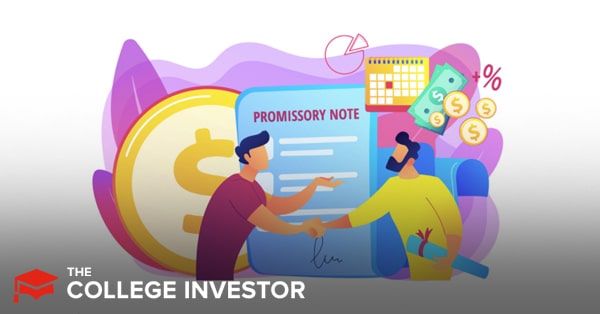
Master Promissory Notes (MPN) are the documents that students are required to sign before they can take out a federal student loan.
Your MPN is legally-binding and rules all the loans that you take out from the Department of Education.
It's incredibly important that you read and understand your MPN before you apply for student loans. We’ll break it down, so you can know what to expect before you read it yourself.
What Are Master Promissory Notes?
A Master Promissory Note (MPN) is a legally-binding document by which federal student loan borrowers promise to repay their loans to the US Department of Education. The MPN lays out the terms and conditions of the loans.
Borrowers must sign an MPN before taking out any federal student loans. However, they don’t need to sign a new MPN each time they receive a loan disbursement.
Borrowers can have the same MPN for up to 10 years. But if an undergraduate borrower decides to take out graduate or professional school loans down the road, they'll need to sign a new MPN.
What Does The MPN Contain?
Master Promissory Notes are detailed documents. Some of their most important parts are outlined below.
Special Note On MPN Repayment Options
One of the most important parts of Master Promissory Notes is the section detailing repayment options. These days, student MPNs detail Income-Driven Repayment (IDR) options (Parent PLUS loans do not have the same options).
Since the MPN is a legally-binding document, borrowers have a fully-certified guarantee that they will qualify for Income-Driven Repayment (IDR) options for the life of the loan. This guarantee is extremely valuable because the payments under IDR plans tend to be manageable for all income levels.
Even if there are sweeping changes to student loans in the future, current borrowers will always have the option to join an Income-Driven Repayment (IDR) plan. If you’re ever confused about your repayment options, a tool like LoanBuddy could help you figure out the right option.
How To Complete A Master Promissory Note
A Master Promissory Note must be completed and signed before you take out your first student loan. This will only happen after you’ve selected a college and have been approved for federal financial aid. Your school's financial aid office will typically send you an email saying "your aid has been approved". You will then follow the directions to your school's financial aid website to complete the MPN.
StudentAid.gov advises that completing an MPN takes approximately 30 minutes to do electronically. Filling out the MPN takes just a few minutes. Prospective borrowers need their Federal Student Aid ID (FSA ID) to complete the MPN electronically. You’ll provide 6 pieces of personal information such as your Social Security Number and your Driver’s License Number.
Then you’ll need to provide contact information for two references. References are people you've known for at least three years who live in the United States. These people will be contacted if you default on your loans and the Department of Education can’t track you down. In most cases, the first reference should be a parent or legal guardian.
Once you fill out that information, you’ll have the opportunity to read the entire agreement. We advise reading the full document before signing it. The information is really valuable and it's a prudent practice to carefully read legal documents before signing on the dotted line.
What Happens After Signing The MPN?
Once you sign your MPN, the Department of Education will notify your school. At that point, the school will do entrance counseling for you. This is a meeting where a financial aid officer from the school explains what it means to borrow money for your education.
Please, please, please, take advantage of this meeting to ask questions and learn more about student loans. When you understand student loan borrowing, you can make informed decisions about how much to borrow.
Final Thoughts
Completing the Master Promissory Note is an important step in the student loan borrowing process, but it doesn't dictate how much you’ll ultimately borrow. After signing your MPN, take steps to reduce the amount you need to borrow, so you can finish school with a lower debt load. For cost-cutting ideas, check out our guide to saving money in college.

Robert Farrington is America’s Millennial Money Expert® and America’s Student Loan Debt Expert™, and the founder of The College Investor, a personal finance site dedicated to helping millennials escape student loan debt to start investing and building wealth for the future. You can learn more about him on the About Page or on his personal site RobertFarrington.com.
He regularly writes about investing, student loan debt, and general personal finance topics geared toward anyone wanting to earn more, get out of debt, and start building wealth for the future.
He has been quoted in major publications, including the New York Times, Wall Street Journal, Washington Post, ABC, NBC, Today, and more. He is also a regular contributor to Forbes.
Editor: Clint Proctor Reviewed by: Chris Muller
